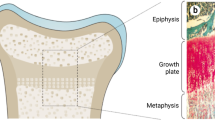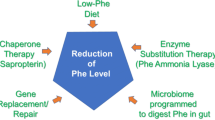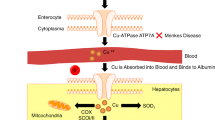Abstract
The absence of L-ascorbic acid (L-AA, or AA) synthesis in scurvy-prone organisms, including humans, other primates, guinea pigs, and flying mammals, was traced to the lack of L-gulonolactone oxidase (GULO) activity. GULO is a microsomal enzyme that catalyzes the terminal step in the biosynthesis of L-AA. Clinical cases of scurvy were described in a family of Danish pigs. This trait is controlled by a single autosomal recessive allele designated od (osteogenic disorder). Here we demonstrate that the absence of GULO activity and the associated vitamin C deficiency in od/od pigs is due to the occurrence of a 4.2-kbp deletion in the GULO gene. This deletion includes 77 bp of exon VIII, 398 bp of intron 7 and 3.7 kbp of intron 8, which leads to a frame shift. The mutant protein is truncated to 356 amino acids, but only the first 236 amino acids are identical to the wild-type GULO protein. In addition, the od allele seems to be less expressed in deficient and heterozygous pigs compared with the normal allele in heterozygous and wild-type animals as determined by ribonuclease protection assay. We also developed a DNA-based test for the diagnosis of the deficient allele. However, we failed to identify the mutated allele in other pig populations.
Similar content being viewed by others
References
PR August MC Flickinger DH Sherman (1994) ArticleTitleCloning and analysis of a locus (mcr) involved in mitomycin C resistance in Streptomyces lavendulae. J Bacteriol 176 4448–4454
EC Birney R Jenness KM Ayaz (1976) ArticleTitleInability of bats to synthesise L-ascorbic acid. Nature 260 626–628
R Brandsch AE Hinkkanen L Mauch H Nagursky K Decker (1987) ArticleTitle6-Hydroxy-D-nicotine oxidase of Arthrobacter oxidans. Gene structure of the flavoenzyme and its relationship to 6-hydroxy-L-nicotine oxidase. Eur J Biochem 167 315–320
GR Buettner BA Jurkiewicz (1996) Chemistry and biochemistry of ascorbic acid. E Cadenas L Packer (Eds) Handbook of Antioxidants Dekker New York 91–115
JJ Burns (1957) ArticleTitleMissing step in man, monkey and guinea pig required for the biosynthesis of L-ascorbic acid. Nature 180 553–.
JJ Burns EH Mosbach (1956) ArticleTitleFurther observations on the biosynthesis of L-ascorbic acid from D-glucose in the rat. J Biol Chem 227 107–111
PH Byers (2002) ArticleTitleKilling the messenger: new insights into nonsense-mediated mRNA decay. J Clin Invest 109 3–6
IB Chatterjee (1973) ArticleTitleEvolution and the biosynthesis of ascorbic acid. Science 182 1271–1272
IB Chatterjee JJ Ghosh NC Ghosh BC Guha (1958) ArticleTitleEffect of cyanide on the biosynthesis of ascorbic acid by an enzyme preparation from goat-liver tissue. Biochem J 70 509–515
IB Chatterjee AK Majumder BK Nandi N Subramanian (1975) ArticleTitleSynthesis and some major functions of vitamin C in animals. Ann N Y Acad Sci 258 24–47
S Ching DC Mahan R Moreau K Dabrowski (2003) ArticleTitleModification of analytical procedures for determining vitamin C enzyme (L-gulonolactone oxidase) activity in swine liver. J Nutr Biochem 14 139–146
JM Chirgwin AE Przybyla RJ MacDonald WJ Rutter (1979) ArticleTitleIsolation of biologically active ribonucleic acid from sources enriched in ribonuclease. Biochemistry 18 5294–5299
P Chomczynski N Sacchi (1987) ArticleTitleSingle-step method of RNA isolation by acid guanidinium thiocyanate-phenol-chloroform extraction. Anal Biochem 162 156–159
K Dabrowski S Hinterleitner (1989) ArticleTitleApplications of a simultaneous assay of ascorbic acid, dehydroascorbic acid and ascorbic sulphate in biological materials. Analyst 114 83–87
J Devereux P Haeberli O Smithies (1984) ArticleTitleA comprehensive set of sequence analysis programs for the VAX. Nucleic Acids Res 12 387–395
H Dittrich TM Kutchan (1991) ArticleTitleMolecular cloning, expression, and induction of berberine bridge enzyme, an enzyme essential to the formation of benzophenanthridine alkaloids in the response of plants to pathogenic attack. Proc Natl Acad Sci USA 88 9969–9973
L Hasan P Vögeli S Neuenschwander P Stoll E Meijerink et al. (1999) ArticleTitleThe L-gulono-gamma-lactone oxidase gene (GULO) which is a candidate for vitamin C deficiency in pigs maps to chromosome 14. Anim Genet 30 309–312
KA Head (1998) ArticleTitleAscorbic acid in the prevention and treatment of cancer. Altern Med Rev 3 174–186
MW Hentze AE Kulozik (1999) ArticleTitleA perfect message: RNA surveillance and nonsense-mediated decay. Cell 96 307–310
K Hitomi N Tsukagoshi (1996) ArticleTitleRole of ascorbic acid in modulation of gene expression. Subcell Biochem 25 41–56
PT Jensen A Basse DH Nielsen H Larsen (1983) ArticleTitleCongenital ascorbic acid deficiency in pigs. Acta Vet Scand 24 392–402 Occurrence Handle1:STN:280:BiuC1MbntVQ%3D Occurrence Handle6675452
T Kawai M Nishikimi T Ozawa K Yagi (1992) ArticleTitleA missense mutation of L-gulono-gamma-lactone oxidase causes the inability of scurvy-prone osteogenic disorder rats to synthesize L-ascorbic acid. J Biol Chem 267 21973–21976 Occurrence Handle1:CAS:528:DyaK38Xls1yruro%3D Occurrence Handle1400508
WC Kenney DE Edmondson TP Singer (1976) ArticleTitleIdentification of the covalently bound flavin of L-gulono-gamma-lactone oxidase. Biochem Biophys Res Commun 71 1194–1200 Occurrence Handle1:CAS:528:DyaE28XltFykurw%3D Occurrence Handle9936
K Kiuchi M Nishikimi K Yagi (1982) ArticleTitlePurification and characterization of L-gulonolactone oxidase from chicken kidney microsomes. Biochemistry 21 5076–5082 Occurrence Handle1:CAS:528:DyaL38XlsVSksL0%3D Occurrence Handle7138847
T Koshizaka M Nishikimi T Ozawa K Yagi (1988) ArticleTitleIsolation and sequence analysis of a complementary DNA encoding rat liver L-gulono-gamma-lactone oxidase, a key enzyme for L-ascorbic acid biosynthesis. J Biol Chem 263 1619–1621 Occurrence Handle1:CAS:528:DyaL1cXktFOqtLo%3D Occurrence Handle3338984
S Li MF Wilkinson (1998) ArticleTitleNonsense surveillance in lymphocytes? Immunity 8 135–141 Occurrence Handle1:CAS:528:DyaK1cXhsVCisb4%3D Occurrence Handle9491995
SM Lynch JM Gaziano B Frei (1996) ArticleTitleAscorbic acid and atherosclerotic cardiovascular disease. Subcell Biochem 25 331–367 Occurrence Handle1:CAS:528:DyaK28Xis1Omurs%3D Occurrence Handle8821982
N Maeda H Hagihara Y Nakata S Hiller J Wilder et al. (2000) ArticleTitleAortic wall damage in mice unable to synthesize ascorbic acid. Proc Natl Acad Sci USA 97 841–846 Occurrence Handle10.1073/pnas.97.2.841 Occurrence Handle1:CAS:528:DC%2BD3cXot1amsA%3D%3D Occurrence Handle10639167
LE Maquat (2002) ArticleTitleNonsense-mediated mRNA decay. Curr Biol 12 R196–R197 Occurrence Handle10.1016/S0960-9822(02)00747-9 Occurrence Handle1:CAS:528:DC%2BD38XitlGgtLk%3D Occurrence Handle11909543
S Möller MD Croning R Apweiler (2001) ArticleTitleEvaluation of methods for the prediction of membrane spanning regions. Bioinformatics 17 646–653 Occurrence Handle11448883
SM Mount (1982) ArticleTitleA catalogue of splice junction sequences. Nucleic Acids Res 10 459–472 Occurrence Handle1:CAS:528:DyaL38XhtFKrurw%3D Occurrence Handle7063411
S Neuenschwander CT Roberts Le Roith (1995) ArticleTitleGrowth inhibition of MCF-7 breast cancer cells by stable expression of an insulin-like growth factor I receptor antisense ribonucleic acid. Endocrinology 136 4298–4303 Occurrence Handle10.1210/en.136.10.4298 Occurrence Handle1:CAS:528:DyaK2MXot1Wmu74%3D Occurrence Handle7664648
M Nishikimi T Kawai K Yagi (1992) ArticleTitleGuinea pigs possess a highly mutated gene for L-gulono-gamma-lactone oxidase, the key enzyme for L-ascorbic acid biosynthesis missing in this species. J Biol Chem 267 21967–21972 Occurrence Handle1:CAS:528:DyaK3sXktVajuro%3D Occurrence Handle1400507
M Nishikimi R Fukuyama S Minoshima N Shimizu K Yagi (1994) ArticleTitleCloning and chromosomal mapping of the human nonfunctional gene for L-gulono-gamma-lactone oxidase, the enzyme for L-ascorbic acid biosynthesis missing in man. J Biol Chem 269 13685–13688 Occurrence Handle1:CAS:528:DyaK2cXktVagsb0%3D Occurrence Handle8175804
JH Roe CA Kuether (1943) ArticleTitleThe determination of ascorbic acid in whole blood and urine through the 2,4-dinitro-phenylhydrazine derivative of dehydroascorbic acid. J Biol Chem 147 399–407 Occurrence Handle1:CAS:528:DyaH3sXhvFahsg%3D%3D
IP Ronchetti G Quaglino G Bergamini (1996) ArticleTitleAscorbic acid and connective tissue. Subcell Biochem 25 249–264 Occurrence Handle1:CAS:528:DyaK28Xis1Omur8%3D Occurrence Handle8821978
J Sambrook EF Fritsch T Maniatis (1989) Molecular Cloning: A Laboratory Manual, 2nd ed. Cold Spring Harbor Laboratory Press Cold Spring Harbor, NY
J Schwager J Schulze (1997) ArticleTitleInfluence of ascorbic acid on the response to mitogens and interleukin production of porcine lymphocytes. Int J Vitam Nutr Res 67 10–16 Occurrence Handle1:CAS:528:DyaK2sXhtlertrs%3D Occurrence Handle9119607
J Schwager J Schulze (1998a) ArticleTitleDependence of growth, bone metabolism and functions of polymorphonuclear leukocytes on ascorbic acid in pigs. Int J Vitam Nutr Res 68 48–58 Occurrence Handle1:CAS:528:DyaK1cXpvVyrtg%3D%3D
J Schwager J Schulze (1998b) ArticleTitleModulation of interleukin production by ascorbic acid. Vet Immunol Immunopathol 64 45–57 Occurrence Handle10.1016/S0165-2427(98)00120-2 Occurrence Handle1:CAS:528:DyaK1cXjs1aqtL4%3D
CS Tsao M Young (1989) ArticleTitleEffect of exogenous ascorbic acid intake on biosynthesis of ascorbic acid in mice. Life Sci 45 1553–1557 Occurrence Handle1:CAS:528:DyaL1MXmtFeks78%3D Occurrence Handle2586220
CS Tsao M Young (1990) ArticleTitleEnzymatic formation of ascorbic acid in liver homogenate of mice fed dietary ascorbic acid. In Vivo 4 167–169 Occurrence Handle1:CAS:528:DyaK3MXhvVCitro%3D Occurrence Handle2133258
P Vögeli R Bolt R Fries G Stranzinger (1994) ArticleTitleCo-segregation of the malignant hyperthermia and the Arg615-Cys615 mutation in the skeletal muscle calcium release channel protein in five European Landrace and Pietrain pig breeds. Anim Genet 25 Suppl 1 59–66 Occurrence Handle7943985
H Weiser M Schlachter HP Probst AW Korman (1992) The relevance of ascorbic acid for bone metabolism. C Wenk (Eds) Ascorbic Acid in Domestic Animals, Hoffmann-La Roche Basle, Switzer-land 73–95
Author information
Authors and Affiliations
Corresponding author
Rights and permissions
About this article
Cite this article
Hasan, L., Vögeli, P., Stoll, P. et al. Intragenic deletion in the gene encoding L-gulonolactone oxidase causes vitamin C deficiency in pigs . Mamm Genome 15, 323–333 (2004). https://doi.org/10.1007/s00335-003-2324-6
Received:
Accepted:
Issue Date:
DOI: https://doi.org/10.1007/s00335-003-2324-6




